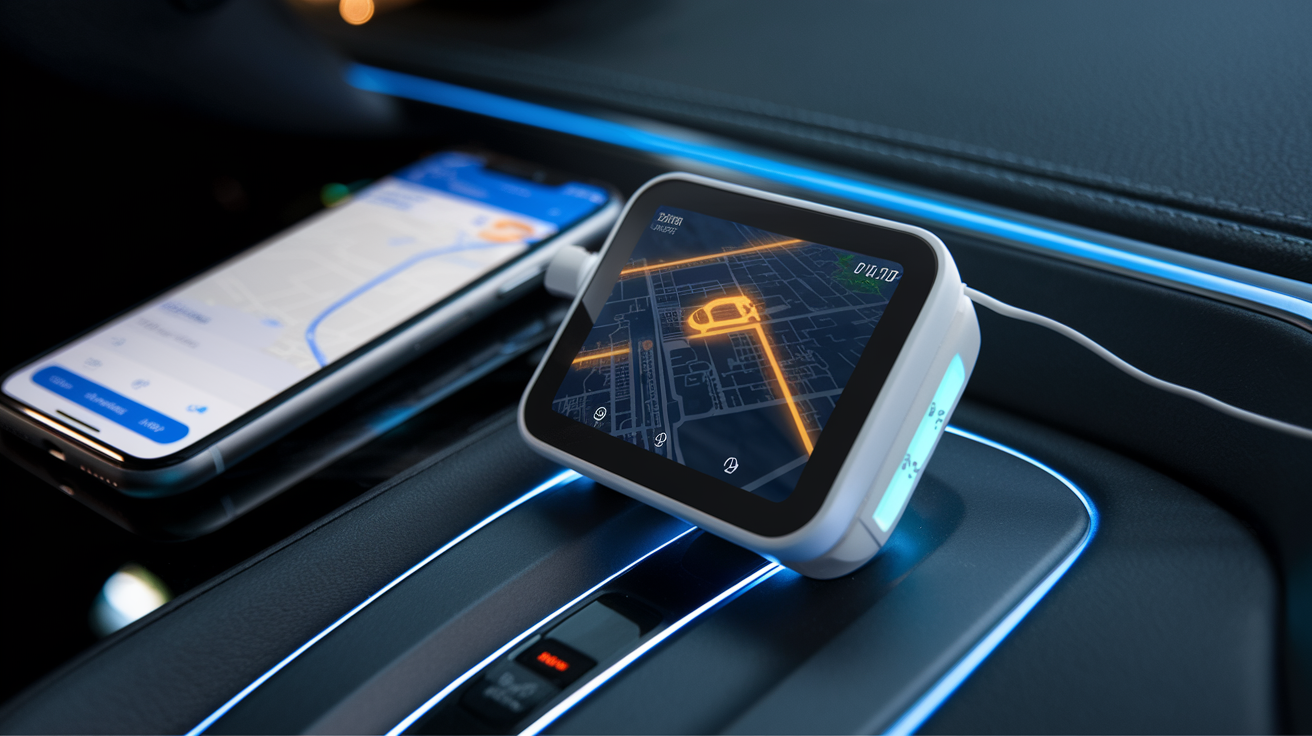
Ever lost your company vehicle for 3 hours while a driver claimed they were “stuck in traffic”? I’ve been there. The sinking feeling in your stomach isn’t just about the missing truck—it’s about the customer who’s still waiting and the revenue slipping away.
Vehicle tracking isn’t just fancy tech for big fleets anymore. It’s the difference between wondering and knowing exactly where your business assets are at all times.
A reliable car tracker GPS system does more than plot dots on a map. It transforms chaotic fleet operations into a symphony of efficiency, cutting fuel costs and boosting customer satisfaction in one swoop.
But here’s what most GPS companies won’t tell you about their tracking systems…
Understanding GPS Car Tracking Technology
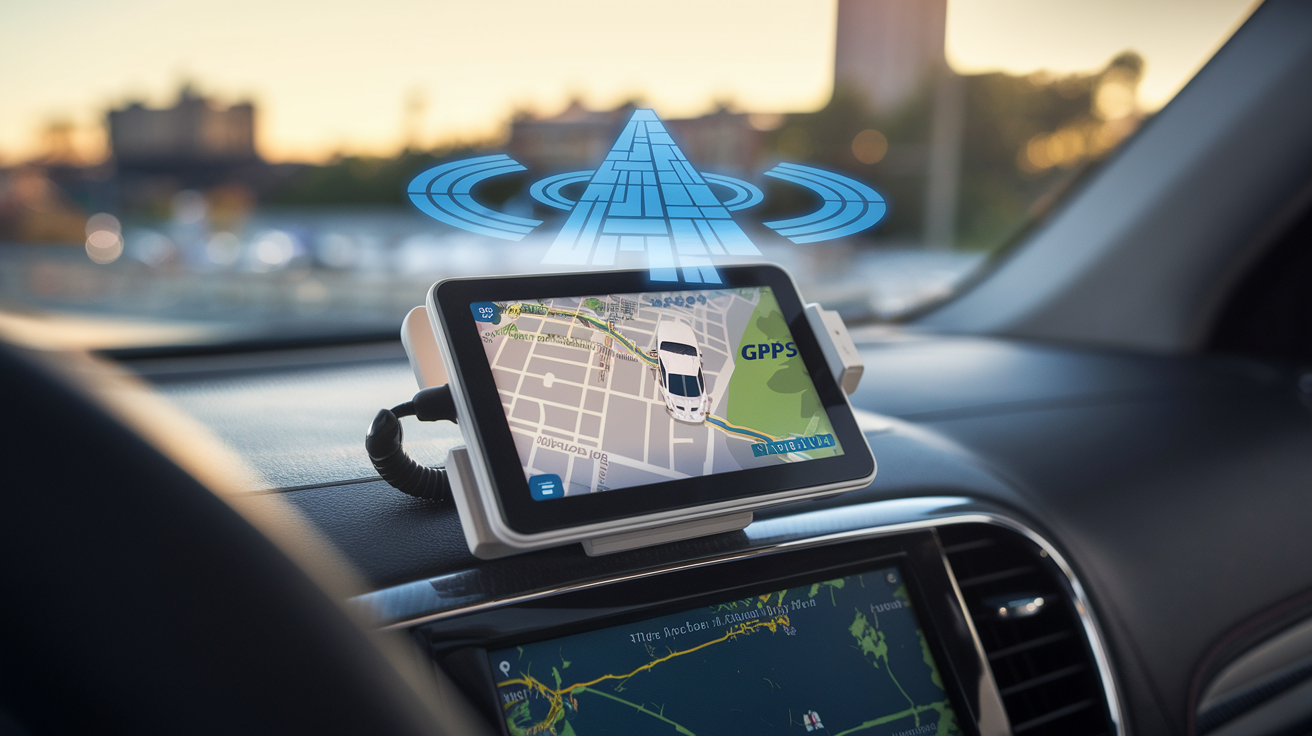
How Modern GPS Trackers Actually Work
Ever wondered how that tiny device can tell you exactly where your car is? GPS trackers are pretty amazing when you think about it.
At their core, car GPS trackers use a network of 24+ satellites orbiting Earth. Your tracker picks up signals from at least four satellites simultaneously, calculating the precise time it takes for each signal to arrive. This time difference helps determine your exact location through a process called trilateration – not triangulation like many people think.
Modern trackers don’t just find position though. They process multiple data points every second, including:
- Longitude and latitude coordinates
- Speed and direction
- Elevation changes
- Start/stop events
What makes today’s trackers special is their size and efficiency. The latest models use advanced chipsets that consume minimal power while maintaining constant satellite connections. Many can now operate for weeks or months on a single charge.
The real magic happens when the tracker combines GPS with cellular technology. After determining location, the device transmits this data via 4G/5G networks to servers that you can access through apps or websites.
Real-Time Tracking vs. Passive Tracking Systems
Choosing between real-time and passive tracking comes down to what you actually need.
Real-time tracking gives you instant location updates, often refreshing every 5-60 seconds. Your tracker constantly communicates with servers, showing you where your vehicle is right now. Great for:
- Fleet management where immediate location matters
- Theft recovery situations
- Monitoring teen drivers
- Emergency response
Passive tracking, on the other hand, stores location data in internal memory, which you download later. Think of it as recording a journey rather than broadcasting it. This approach:
- Uses significantly less battery power
- Doesn’t require monthly data plans
- Often costs less upfront
- Works in areas without cellular coverage
Most people assume real-time is always better, but that’s not always true. Passive systems offer better privacy and can actually record more detailed movement data at shorter intervals.
The decision ultimately depends on your primary concern: immediate awareness or detailed historical records.
Key Components of a Quality GPS Car Tracker
Not all trackers are created equal. When you’re shopping around, pay attention to these critical components:
Receiver Quality: The GPS chipset determines location accuracy. Top models like the SiRFstarV and MediaTek MT3333 can pinpoint within 2-3 meters even in challenging environments.
Battery Life: Look for devices with at least 7-10 days of active tracking. The best units use smart power management that activates only when movement is detected.
Cellular Connectivity: Multi-band support ensures your tracker works across different carrier networks. 4G LTE is now standard, with 5G becoming more common.
Build Quality: Weatherproof ratings matter! A good tracker should be at least IP67 rated (waterproof to 1m depth).
Magnetic Mount: Strong neodymium magnets allow for easy concealed installation under vehicles.
Geofencing Capability: Setting virtual boundaries with instant alerts when crossed is essential for security applications.
Tamper Alerts: Premium trackers detect and notify when someone attempts to remove or disable them.
The physical size matters too. Modern micro-trackers can be as small as a matchbox while still delivering professional-grade performance.
Advancements in Tracking Technology for 2025
The GPS tracking landscape in 2025 looks dramatically different from just a few years ago. Here’s what’s changing the game:
AI-Powered Predictive Analytics: Today’s best trackers don’t just show where your vehicle is—they predict where it’s going. Machine learning algorithms analyze driving patterns to forecast arrival times with spooky accuracy.
Ultra-Low Power Consumption: New trackers can now operate for months on a single charge. Some models use ambient energy harvesting (like solar or vibration) to extend battery life indefinitely.
Enhanced Indoor Positioning: GPS traditionally fails inside buildings, but 2025’s top models combine Bluetooth mesh networks, Wi-Fi triangulation, and accelerometer data to maintain tracking even in parking garages.
Integrated Dashcam Functionality: Video evidence combined with location data provides context for accidents or security incidents. The latest devices capture 4K footage automatically during unusual events.
Advanced Anti-Theft Integration: New trackers can now disable vehicle systems remotely or automatically alert authorities with precise location data when theft is detected.
Privacy-Focused Design: Responding to growing concerns, manufacturers have implemented zero-knowledge encryption where even the tracking company can’t access your location data without explicit permission.
The most significant 2025 advancement might be seamless ecosystem integration. Today’s trackers work directly with smart home systems, insurance providers, and emergency services to create comprehensive security networks around your vehicle.
Top Benefits of Installing a GPS Car Tracker
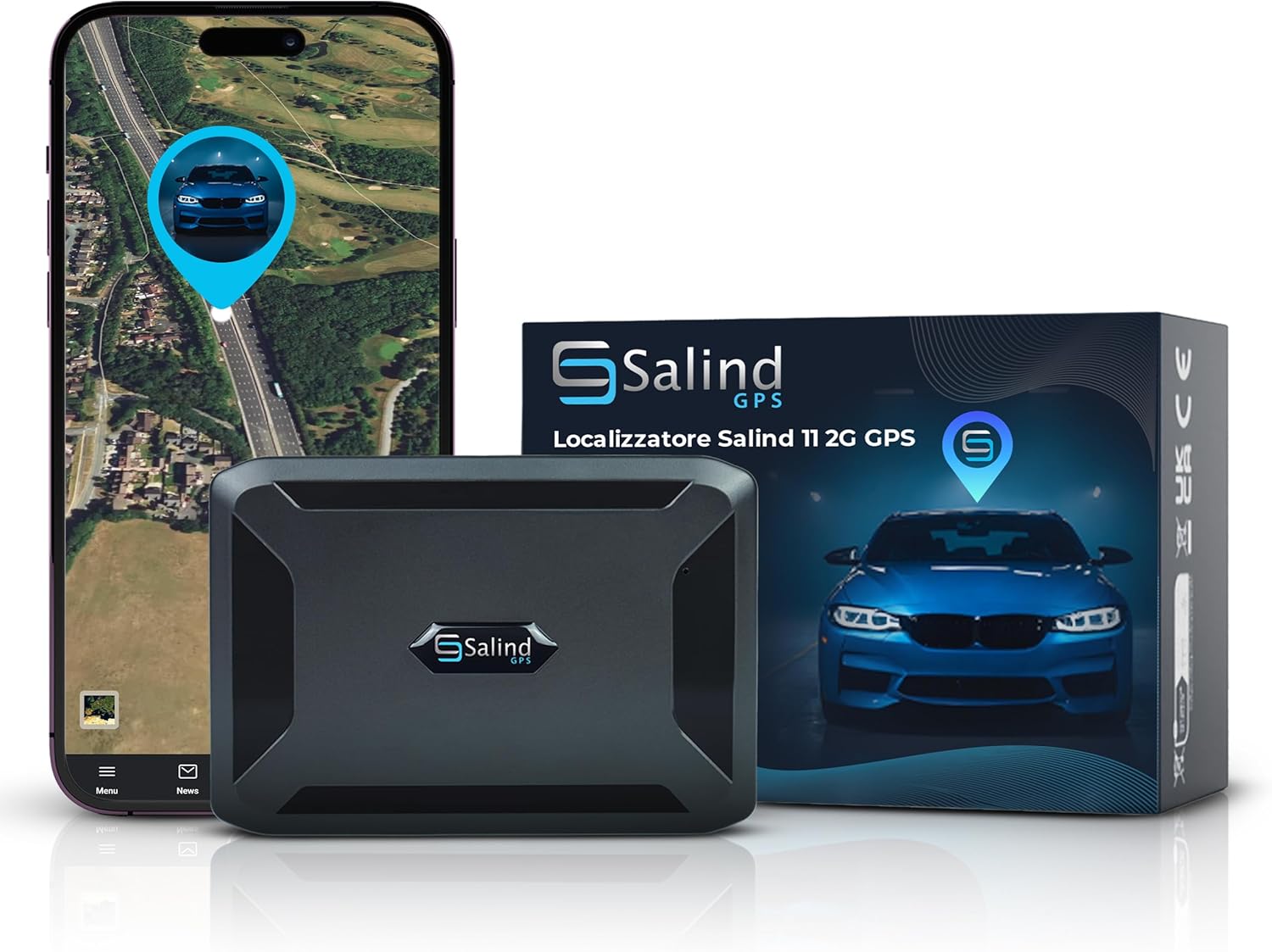
A. Theft Prevention and Recovery Success Rates
Got your car stolen? Without a GPS tracker, you’re playing a nasty game of chance with only about a 50% recovery rate. With a GPS tracker installed? Those odds jump to over 90%.
It’s simple math. When thieves take your vehicle, time is everything. Police can pinpoint your car’s exact location within minutes when you’ve got a tracker, instead of driving around aimlessly hoping to spot it.
Modern GPS trackers don’t just tell you where your car is—they spring into action the moment something’s wrong. Most systems send instant alerts when:
- Your car moves outside a designated zone
- The engine starts during odd hours
- The device gets tampered with
Some advanced models even let you remotely disable the engine, leaving thieves stranded and confused while authorities close in.
B. Insurance Premium Reductions You Can Expect
Insurance companies love customers who take security seriously. Install a GPS tracker and you’re looking at premium discounts ranging from 5% to 25%, depending on your provider.
Why? Because trackers dramatically reduce their risk. When cars get recovered quickly, insurers pay out less on comprehensive claims.
Here’s what typical savings look like:
| Insurance Type | Average Annual Premium | Potential Savings with GPS |
|---|---|---|
| Standard Auto | $1,500 | $75-$225 |
| Luxury Vehicle | $2,800 | $140-$420 |
| Fleet Vehicle | $1,200 per vehicle | $120-$300 per vehicle |
The better the tracker, the bigger your discount. Premium trackers with engine immobilization features often qualify for the highest discounts.
Just call your insurance company after installation—most have specific programs for vehicles with approved tracking systems.
C. Fleet Management Efficiency Improvements
Running a business fleet without GPS tracking is like managing employees without knowing where they are or what they’re doing. It’s a productivity nightmare.
Companies implementing GPS fleet tracking report operational cost reductions of 10-30% within the first year. The savings come from everywhere:
Fuel consumption drops by 20-25% when drivers know their routes are being monitored. That idle time at the convenience store? Gone.
Maintenance costs plummet when you can track:
- Excessive speeding that damages components
- Harsh braking patterns that wear down brakes prematurely
- Unauthorized after-hours usage
Real-time location tracking means your dispatch team can send the closest vehicle to urgent calls, cutting response times in half and handling more jobs per day.
D. Peace of Mind for Parents of Teen Drivers
Handing car keys to your teenager ranks among life’s most anxiety-inducing moments. GPS trackers transform that fear into manageable awareness.
You’re not spying—you’re creating accountability. Most parent-focused trackers offer:
- Real-time speed alerts when limits are exceeded
- Boundary notifications if they drive outside agreed areas
- Driving behavior scores that track harsh acceleration and braking
- Curfew alerts that notify you if the car moves after hours
These systems create natural conversation opportunities about driving habits without the awkward “I don’t trust you” vibe.
Parents report dramatically reduced arguments about driving privileges when boundaries are clear and enforceable through technology rather than just verbal agreements.
E. Travel History Documentation for Business Expenses
Tax season becomes infinitely less painful when you have automated mileage tracking. GPS trackers create irrefutable evidence of business travel that even the strictest tax authorities accept.
Most trackers automatically generate:
- Detailed trip logs with precise mileage
- Route maps that verify business destinations
- Date and time stamps for each journey
- Categorization options for business vs. personal use
No more scrambling to reconstruct six months of travel from memory or scribbled notes. The average business driver misses claiming about 20% of legitimate business miles—money left on the table that a GPS tracker recovers automatically.
The data exports cleanly to spreadsheets or directly to accounting software, cutting expense report preparation time by up to 75%.
Choosing the Right GPS Tracker for Your Needs
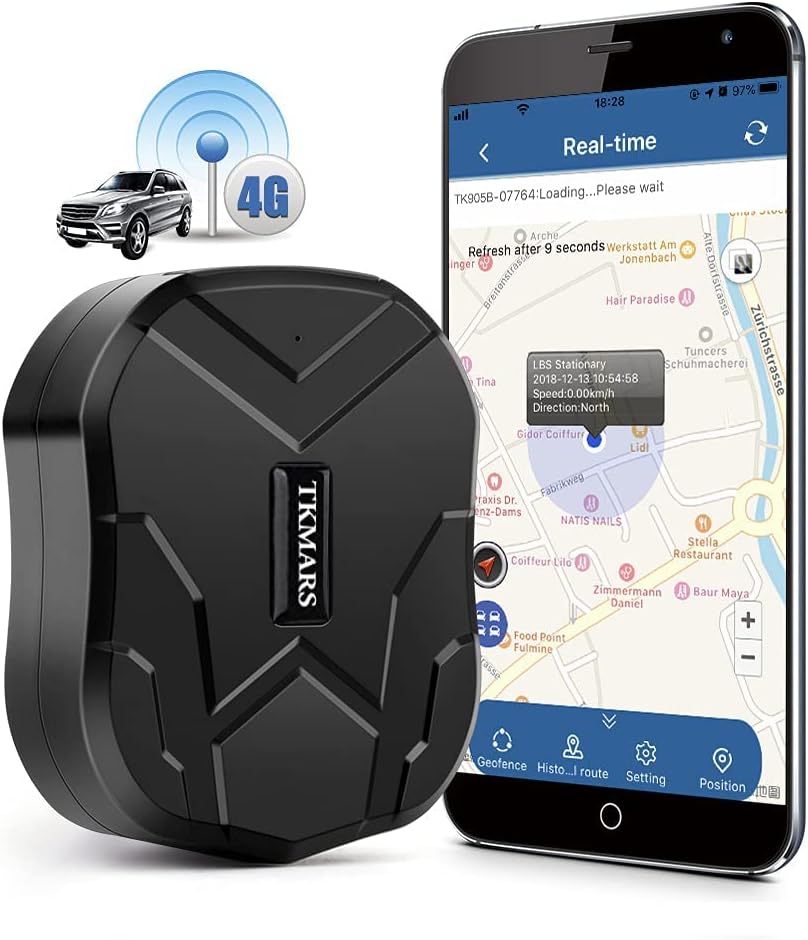
A. Essential Features Worth Paying For
Ever noticed how all GPS trackers claim to be “the best” but somehow feel completely different when you actually use them? Truth is, not all trackers are created equal.
Real-time tracking is non-negotiable. A good tracker updates location every 10-15 seconds when moving, not every few minutes. This makes all the difference when tracking a stolen vehicle.
Geofencing capabilities let you set virtual boundaries and get alerts when your vehicle leaves designated areas. Think of it as an invisible fence that texts you immediately if someone’s driving your car somewhere they shouldn’t.
SOS buttons are life-savers—literally. They allow whoever’s in the vehicle to send emergency alerts with their exact location to pre-set contacts.
Movement alerts notify you when your vehicle starts moving unexpectedly. This feature alone can save your car before it’s too far gone.
Water resistance matters too. Your tracker needs to withstand rain, snow, and occasional splashes. Look for at least IP65 rating for decent protection.
Historical playback lets you review where your vehicle has been—perfect for tracking business deliveries or checking if your teenage driver really went where they said they would.
B. Battery Life Considerations for Different Usage Scenarios
Battery life can make or break your tracking experience. Nothing’s worse than discovering your tracker died right when you needed it most.
For daily commuters, a tracker with 1-2 weeks of battery life should suffice if you’re able to charge it regularly. These typically send frequent updates and offer more detailed tracking.
If you’re tracking a seasonal vehicle like a boat or RV, you’ll want something with months of standby time. Some high-capacity models offer 6+ months when in sleep mode, waking only when movement is detected.
For fleet managers, hardwired solutions eliminate battery concerns altogether by connecting directly to the vehicle’s power system.
Standby modes dramatically extend battery life. The best trackers automatically switch to lower power modes when stationary, then instantly wake up when motion is detected.
Some trackers now include 10000mAh batteries that can last 60-90 days on a single charge with standard tracking intervals. That’s a game-changer for most users.
Remember that battery life claims often assume ideal conditions. Cold weather, poor signal strength, and frequent location updates can cut advertised battery life in half.
C. Comparing Subscription vs. One-Time Payment Models
GPS trackers come in two flavors: subscription-based or one-time payment. This choice impacts your wallet more than anything else in the long run.
Subscription models typically offer more robust features:
- Unlimited tracking updates
- Better app interfaces
- Customer support
- Automatic software updates
- Lower upfront costs ($50-150)
But those monthly fees ($5-25) add up fast. After two years, you’ve often paid more than double the device’s value.
One-time payment trackers are gaining popularity. They use prepaid SIM cards or local storage options. The upfront cost is higher ($150-300), but there’s no monthly bill haunting you forever.
Some manufacturers now offer hybrid models—buy the device outright, then choose whether to activate premium features for additional fees.
The math is simple: if you’ll use the tracker for more than 18 months, one-time payment models usually save money. For short-term needs, subscription models make more sense.
Don’t forget to factor in cellular network coverage. Some subscription services include roaming coverage across multiple carriers, while one-time models might be limited to a single network.
Installation and Setup Made Simple
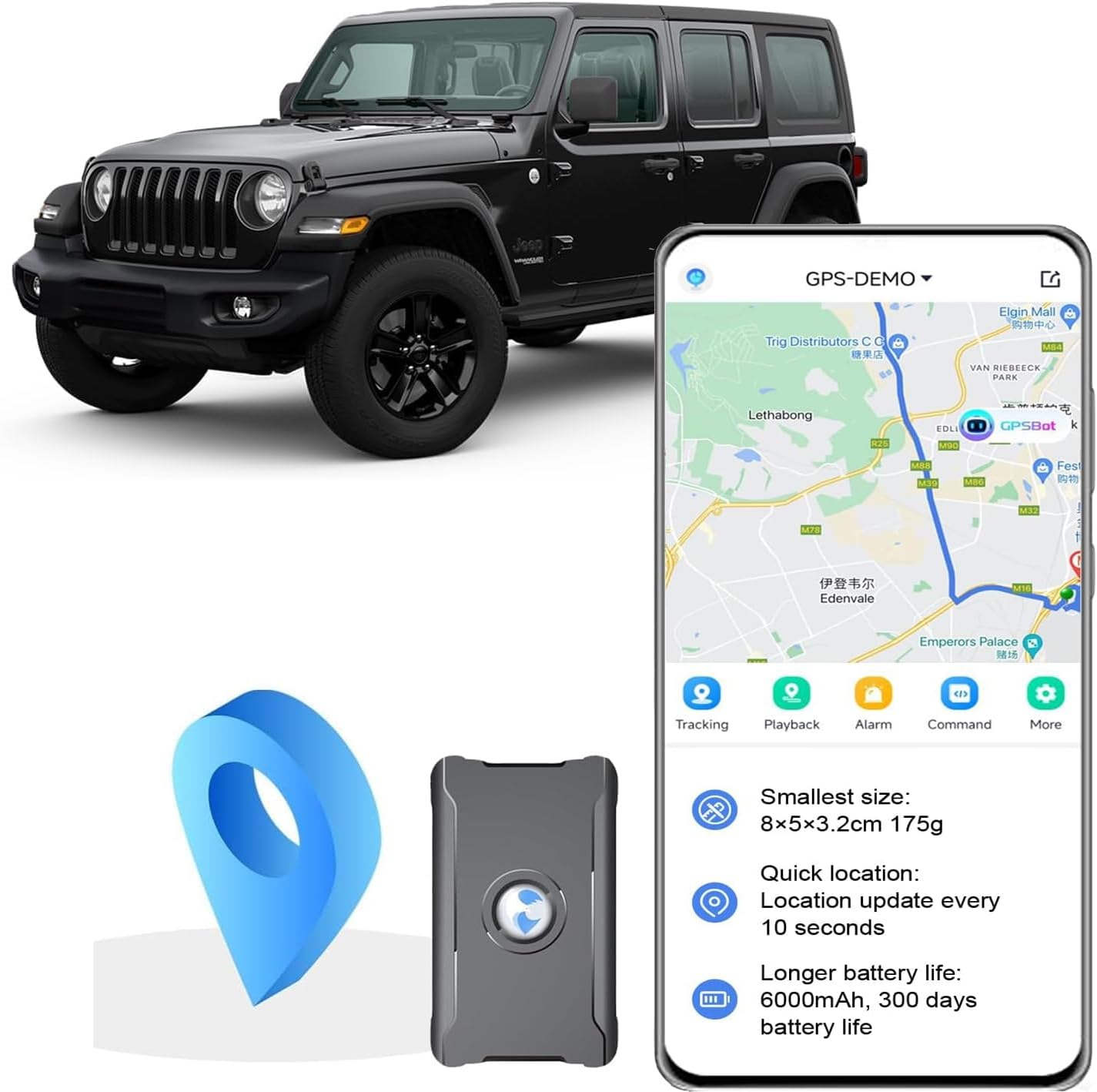
A. DIY Installation Steps Anyone Can Follow
Installing your GPS car tracker doesn’t need to be complicated. Here’s how to do it yourself in just a few minutes:
- Find the right spot – Under the dashboard or in the glove compartment works well for most vehicles. For the magnetic tracker model, you can place it underneath your car’s chassis.
- Connect to power – Most trackers need a power source. You can:
- Hardwire to your vehicle’s electrical system
- Plug into the OBD-II port (usually under the steering wheel)
- Use the tracker’s built-in 6000mAh battery for up to 90 days of standby time
- Test the connection – Before finalizing placement, check that your device is communicating with the app.
- Secure the device – Use the magnetic mount or zip ties to prevent the tracker from moving around.
- Activate the service – Complete your subscription setup through the app.
B. Professional Installation: When It’s Worth the Cost
Sometimes calling in the pros makes sense:
| DIY Installation | Professional Installation |
|---|---|
| Free | $50-$150 service fee |
| Basic placement | Optimal concealment |
| External mounting | Integration with vehicle systems |
| No warranty on work | Installation often guaranteed |
Professional installation is worth considering if:
- You’re not comfortable working with vehicle electronics
- You want the tracker completely hidden from view
- You need advanced features like engine immobilization
- Your vehicle has a complex electrical system
- You want a clean, wire-free installation
C. Positioning for Optimal Signal Reception
The placement of your GPS tracker dramatically affects performance. For best results:
- Avoid metal enclosures – They block GPS signals
- Face the sky – Position the antenna upward when possible
- Stay away from heat sources – Extreme temperatures reduce battery life
- Consider weather exposure – If mounting externally, ensure it’s protected
- Balance concealment with function – The most hidden spot isn’t always the best for signal
The tracker’s high sensitivity means it works even in challenging environments, but smart positioning ensures consistent tracking.
D. Setting Up Mobile Alerts and Notifications
The real power of your GPS tracker comes through its mobile app. Here’s how to set it up:
- Download the companion app from your device’s app store
- Create an account and register your device
- Set geofencing boundaries – Get instant alerts when your vehicle enters or exits designated areas
- Configure speed alerts – Receive notifications if your vehicle exceeds set speeds
- Schedule maintenance reminders based on mileage
- Customize battery alerts to avoid unexpected power loss
- Set movement notifications for unauthorized use
The intuitive app interface makes these settings simple to adjust, even for tech novices. You can modify your alert preferences anytime based on your changing needs.
Privacy and Legal Considerations

A. Current Laws Governing Vehicle Tracking (2025 Update)
The vehicle tracking landscape has changed dramatically in the past year. As of June 2025, federal regulations now require all commercial GPS tracking devices to include end-to-end encryption and mandatory breach notifications.
Most states have adopted the Vehicle Privacy Protection Act (VPPA), which sets clear boundaries on when and how vehicles can be tracked. The key points:
- Business use requires written consent from employees
- Personal vehicle tracking needs documented permission from all regular users
- Law enforcement needs warrants except in specific emergency circumstances
- 72-hour data retention limits for non-consented tracking
California, New York, and Texas have gone further with their “Right to Move Privately” laws, requiring tracking companies to delete location data after 30 days unless specifically requested otherwise.
Remember those weird gray areas from 2023? They’re mostly gone now. The Supreme Court’s decision in Martinez v. TechTrack established that continuous GPS monitoring constitutes a search under the Fourth Amendment, even for vehicles in public spaces.
B. Ethical Use of Tracking Technology
GPS tracking gives you incredible power. But with great power comes… well, you know the rest.
The ethical tracker’s code boils down to these principles:
- Transparency: Everyone involved should know they’re being tracked
- Necessity: Only track when truly needed, not just because you can
- Proportionality: Collect only the data you actually need
- Accountability: Be responsible for how you use the information
Parents tracking teens face particularly thorny issues. While it’s tempting to monitor your 16-year-old’s every move, experts recommend balancing safety with trust-building. Consider graduated tracking—more oversight for new drivers, less as they prove responsibility.
For businesses, employee monitoring requires clear policies. Is tracking limited to work hours? Will data affect performance reviews? These questions need answers before deployment.
C. Protecting Your Tracking Data from Hackers
Your tracking data is a goldmine for criminals. Think about it—it reveals when you’re away from home, your daily routines, and valuable asset locations.
Here’s how to lock it down:
- Use strong, unique passwords for your tracking accounts and apps
- Enable two-factor authentication on everything related to your tracker
- Regularly update your tracking device firmware and mobile apps
- Check for suspicious activity in your location history
- Disable unnecessary features that broadcast data you don’t need
The biggest vulnerability? Unsecured Wi-Fi. Never manage your tracking settings on public networks unless you’re using a VPN.
Most modern trackers let you set “geofencing” for your data—meaning your information is only accessible from certain physical locations. Use this feature if available.
D. Consent Requirements for Tracking Others’ Vehicles
The golden rule of vehicle tracking: get clear consent. Period.
In 2025, verbal consent isn’t enough anymore. You need documented permission, especially for:
- Spouses or partners sharing vehicles
- Adult children driving parents’ cars
- Friends borrowing your vehicle
- Company cars used for personal errands
The easiest approach? A simple consent form covering:
- Who is tracking the vehicle
- What information is collected
- How long data will be stored
- Who can access the tracking information
- How to revoke consent
For shared family vehicles, experts recommend family meetings to discuss boundaries. Maybe tracking is acceptable for location during emergencies, but not for monitoring driving habits.
And if you’re installing a tracker on a vehicle you own but don’t drive? Most states now require you to disclose the tracker’s presence to the primary driver, even if they’re your employee or family member.
Real-World Applications Beyond Anti-Theft
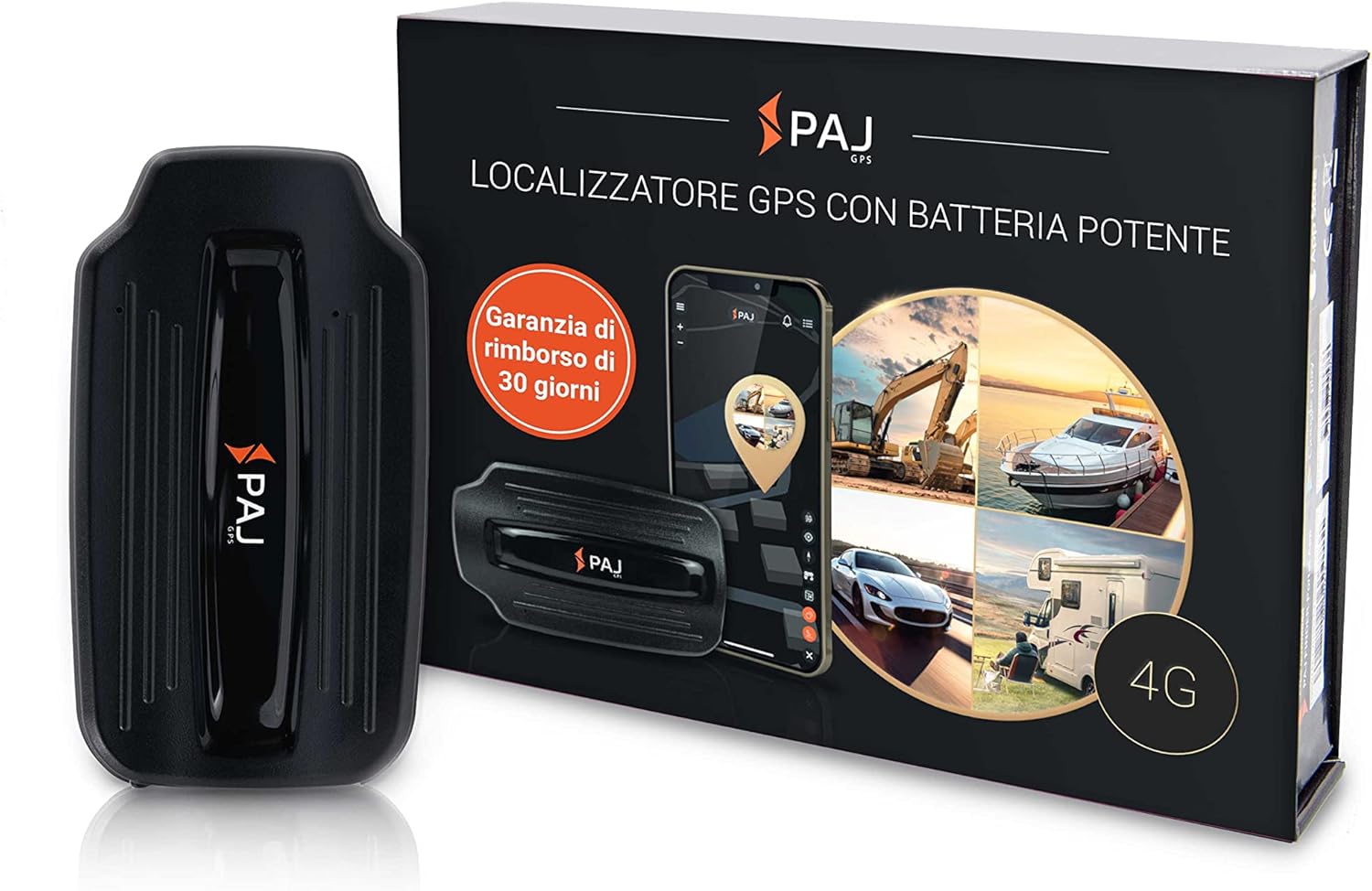
Real-World Applications Beyond Anti-Theft
A. Monitoring Driving Habits for Better Safety
GPS car trackers aren’t just for catching thieves—they’re actually amazing tools for becoming a better driver. Picture this: you get detailed reports showing your acceleration patterns, braking habits, and even those sharp turns you make when you’re running late.
Parents with teen drivers absolutely love this feature. Instead of constantly texting “where are you?” and “are you driving safely?”, they can check the data and have actual conversations about specific driving habits. “I noticed you’ve been braking pretty hard near school—is there something going on with traffic there?”
Many insurance companies now offer discounts for drivers who share their GPS driving data. Why? Because people who monitor their driving tend to drive more carefully. It’s like having a driving coach in your car 24/7.
B. Geofencing to Protect Your Vehicle
Geofencing might sound super technical, but it’s actually really simple. You draw a virtual boundary on a map, and your tracker alerts you when your car crosses that line.
This is perfect for:
- Setting boundaries around your neighborhood
- Getting alerts if your car leaves your workplace parking lot
- Knowing if your teenager drives beyond agreed limits
- Being notified if your car enters high-crime areas
The coolest part? You set up these boundaries in seconds using the tracker’s app. When your car crosses the line, you get an instant notification on your phone.
C. Trip Optimization for Fuel Savings
Gas prices aren’t getting any cheaper, right? GPS trackers can actually help you save real money on fuel.
By analyzing your regular routes, advanced GPS systems can suggest:
- More efficient routes to common destinations
- Times when traffic is lightest
- Driving habits that burn extra fuel
- Unnecessary idling time
Many users report saving 10-15% on gas just by making small adjustments based on their tracker data. For a family with two cars, that could mean hundreds of dollars saved each year.
D. Emergency Response Advantages in Accidents
When seconds count, GPS trackers deliver.
In a serious accident, some GPS trackers can detect the impact and automatically alert emergency services with your exact location. This is especially crucial if you’re:
- Driving in remote areas
- Traveling alone at night
- Unable to reach your phone after a crash
- Disoriented and unsure of your location
There are countless stories of lives saved because emergency responders could pinpoint exactly where a vehicle was after an accident. Some systems even provide responders with data about the crash severity, helping them prepare appropriate medical resources before they even arrive.

GPS car trackers have transformed vehicle security and management, offering peace of mind through real-time location tracking, anti-theft protection, and comprehensive monitoring capabilities. When selecting the right tracker for your needs, consider factors like subscription costs, battery life, and installation requirements, while being mindful of privacy regulations and obtaining proper consent when tracking shared vehicles.
Take the step to protect your investment and enhance your driving experience by installing a GPS car tracker today. Whether you’re a concerned parent tracking a teen driver, a business owner managing a fleet, or simply someone who wants added security for your vehicle, the versatility and affordability of modern GPS tracking solutions make them an essential tool for responsible vehicle ownership in 2025.
